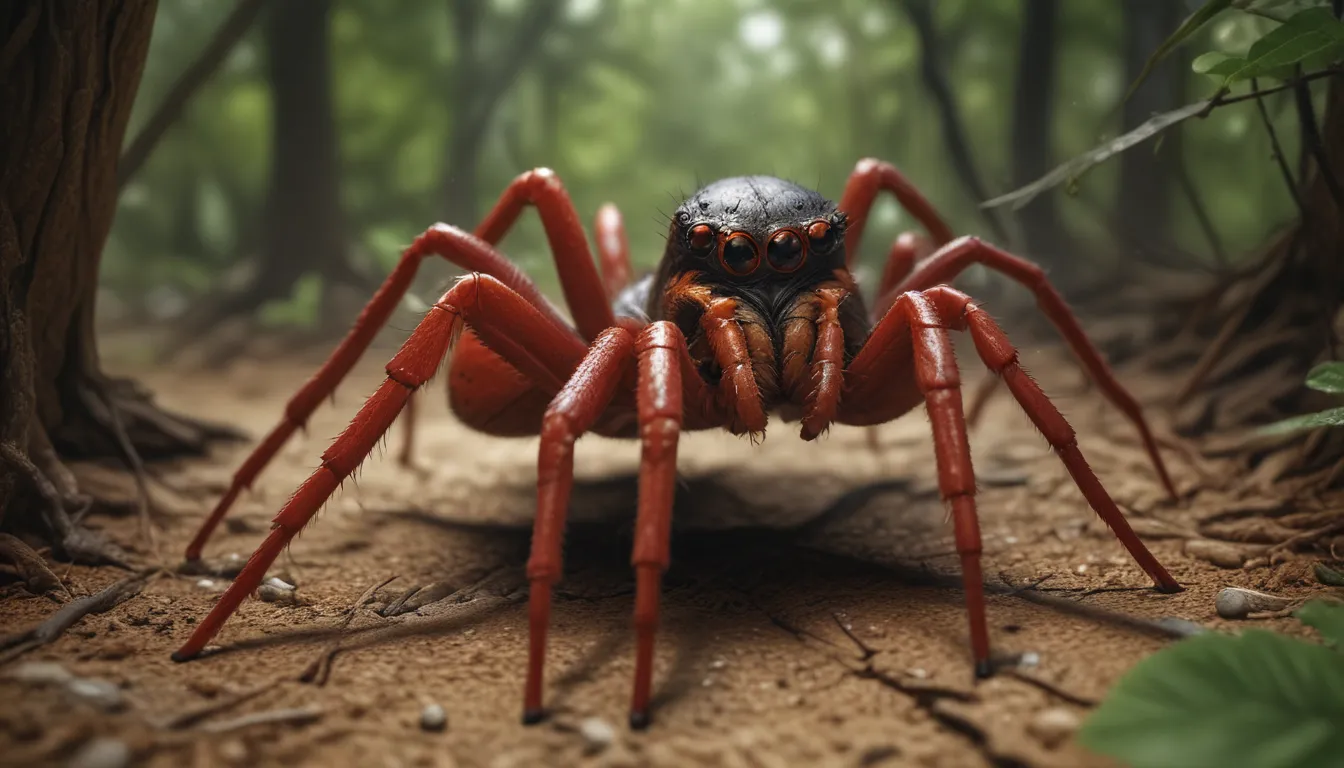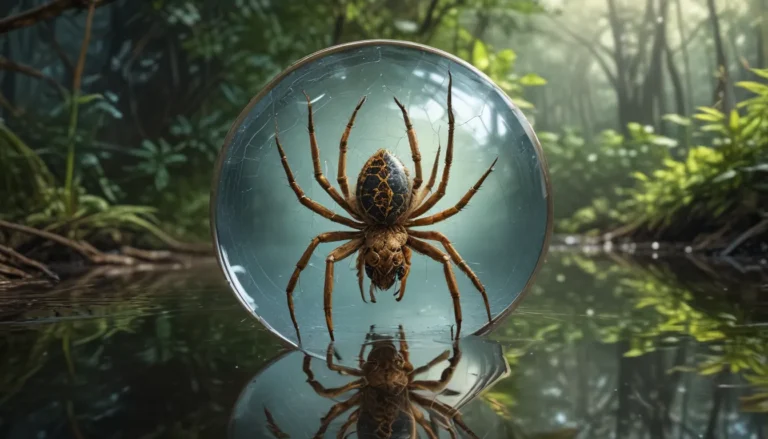The pictures we use in our articles might not show exactly what the words say. We choose these pictures to make you interested in reading more. The pictures work together with the words but don’t take their place. The words still tell you the important facts.
Are you curious about the fascinating world of the redback spider? Known for its striking appearance and venomous bite, this arachnid species has captured the attention of animal enthusiasts and researchers around the globe. Join us as we uncover 20 intriguing facts about the redback spider, from its unique characteristics to its impact on the ecosystem.
Delving into the Redback Spider World
Let's embark on a journey to explore the enigmatic world of the redback spider, a species that has both intrigued and intimidated us with its glossy appearance and deadly reputation. As we unravel the mysteries of this formidable predator, we'll discover the secrets of its survival tactics, mating rituals, and more.
The Enigmatic Glossy Appearance
The redback spider is easily distinguishable by its glossy black color and the iconic red stripe adorning its abdomen. This unique appearance sets it apart from other spiders in Australia, making it a standout creature in the wild.
The Lethal Bite of the Redback Spider
One of the most infamous traits of the redback spider is its highly venomous bite, which can induce severe pain, sweating, and other symptoms. While fatalities are rare, it is crucial to seek medical attention promptly if bitten by one of these spiders.
Feminine Dominance in Size
In the world of redback spiders, females reign supreme in size, with their bodies reaching 10-15 mm compared to the diminutive 3-4 mm of males. This size difference is a common trait in many spider species, reflecting unique reproductive dynamics.
The Intricate Web Patterns of Redback Spiders
Unlike their meticulous counterparts, redback spiders are notorious for their messy and irregular web patterns. These intricate designs serve as traps for unsuspecting prey, showcasing the spider's hunting prowess.
Cannibalistic Tendencies Unveiled
Redback spiders exhibit cannibalistic behavior, with females occasionally consuming their mates post-mating. This macabre ritual ensures the female's nutritional needs as she prepares to produce egg sacs for the next generation.
From the Outback to Urban Landscapes
Redback spiders have made themselves at home in various environments across Australia, from dense forests to urban settings. Their adaptability and resilience have enabled them to thrive alongside humans in gardens, parks, and even playgrounds.
Unveiling the Courtship Dance
Witness the intricate courtship dance of the male redback spider as he woos the female with precision and agility. Through this ritual, the male secures his chance to pass on his genes to the next generation, showcasing nature's beautiful dance of life.
The Cycle of Life: Egg Sac Production
After successful mating, the female redback spider produces egg sacs containing up to 300 eggs. These sacs are carefully hidden in protective webs, ensuring the survival of the spiderlings as they prepare to embark on their own journeys.
The Longevity of Redback Spiders
With a lifespan ranging from 1-3 years, redback spiders have ample time to produce multiple clutches of eggs and perpetuate their lineage. This extended lifespan highlights the resilience and survival instincts of these intriguing creatures.
The Warning Mark of the Hourglass
The iconic red marking on the female redback spider, known as the "hourglass," serves as a warning to predators of her venomous nature. This visual cue acts as a deterrent, promoting respect and caution when encountering these spiders in the wild.
Navigating the Frequency of Bites
While redback spider bites are not uncommon, serious envenomations are rare due to the availability of antivenom. By exercising caution and awareness, we can minimize the risk of encounters with these venomous creatures.
Embracing the Darkness: Preferred Habitats
Redback spiders gravitate towards dark and sheltered areas, seeking refuge under logs, in crevices, or within outdoor structures like sheds and garages. Understanding their preferred habitats can help us coexist peacefully with these arachnids.
The Art of Survival: Enduring without Food
Redback spiders possess the remarkable ability to survive for extended periods without food, thanks to their metabolic adaptations. This resilience enables them to endure long periods of starvation and thrive in diverse environments.
Urban Warriors: Thriving in Cities
Adaptability is the key to survival for redback spiders, as they successfully navigate urban landscapes and establish themselves in gardens, parks, and buildings. Their presence in outdoor furniture and playground equipment showcases their tenacity in the face of urbanization.
The Journey of Reproduction
Female redback spiders embark on multiple reproduction cycles, producing clutches of eggs every 2-3 weeks to maximize their genetic legacy. This rapid reproduction rate contributes to the population growth of these resilient creatures.
The Impact of Indigenous Symbolism
In indigenous Australian culture, the redback spider holds symbolic significance, representing themes of danger, protection, and survival. Its presence in folklore and storytelling underscores its cultural importance and enduring legacy.
Venomous Virtuosity: Understanding Redback Spider Venom
The venom of the redback spider contains potent neurotoxins that target the nervous system, causing pain and discomfort. While rarely fatal, untreated bites can lead to serious health complications, highlighting the importance of prompt medical intervention.
A Global Reputation: Redback Spider on the World Stage
The redback spider's notoriety transcends borders, earning it a place among the most venomous spiders in the world. Its reputation for lethal bites and distinctive appearance has captured the attention of enthusiasts and researchers worldwide.
Embracing Coexistence with Caution
In conclusion, redback spiders captivate us with their intriguing behaviors and unique characteristics. As we marvel at their resilience and adaptability, it is essential to approach these creatures with caution and respect. By understanding their habits and taking necessary precautions, we can coexist harmoniously with redback spiders in their natural habitats.
Frequently Asked Questions
- Are redback spiders dangerous?
-
Yes, redback spiders are venomous and can cause severe pain and illness. Seek medical attention if bitten.
-
Where are redback spiders commonly found?
-
Redback spiders are native to Australia and inhabit various habitats, including urban areas, gardens, and bushland.
-
How do redback spiders mate?
-
Redback spiders engage in sexual cannibalism, with females sometimes consuming males after mating.
-
What do redback spiders eat?
-
Redback spiders primarily feed on insects and use their venom to immobilize their prey.
-
Can redback spiders be kept as pets?
-
While some individuals may keep redback spiders as pets, their venomous nature poses a risk to humans.
-
How long do redback spiders live?
-
Female redback spiders can live up to three years, while males have a shorter lifespan of a few months.
-
How can I protect myself from redback spider bites?
-
Wear protective clothing and avoid reaching into dark or hidden areas where spiders may be present to reduce the risk of bites.
-
Can antivenom treat redback spider bites?
- Yes, antivenom is available and should be used for severe redback spider bites. Seek medical help promptly if bitten.
#### Exploring Trustworthy Knowledge
Our dedication to delivering accurate and engaging content is at the core of what we do. Each fact shared on our platform comes from contributors like you, ensuring a diverse range of insights and information. Our team of editors diligently reviews each submission to uphold the highest standards of reliability and authenticity. Trust in our commitment to quality and embark on a journey of exploration and learning with us.






